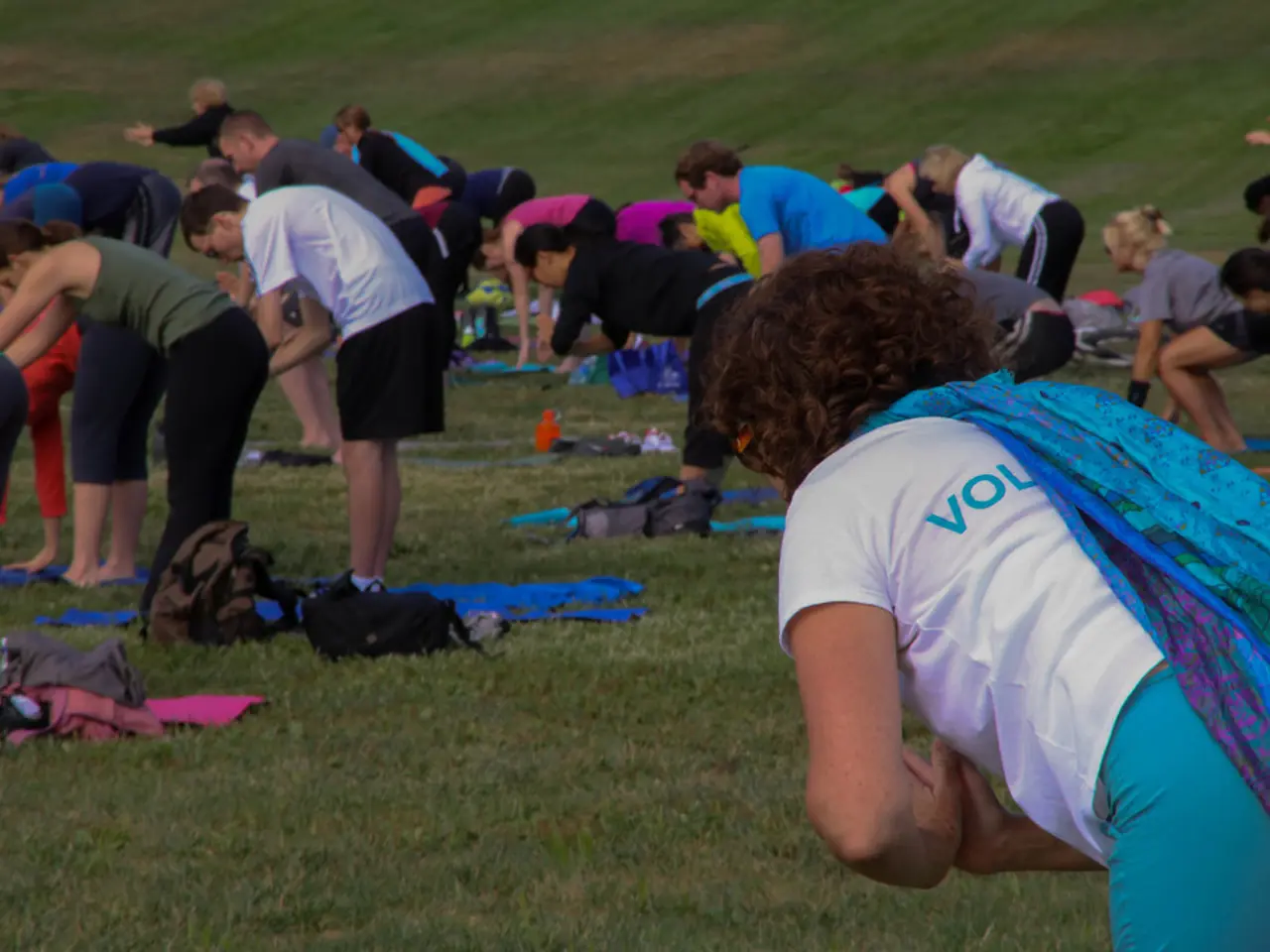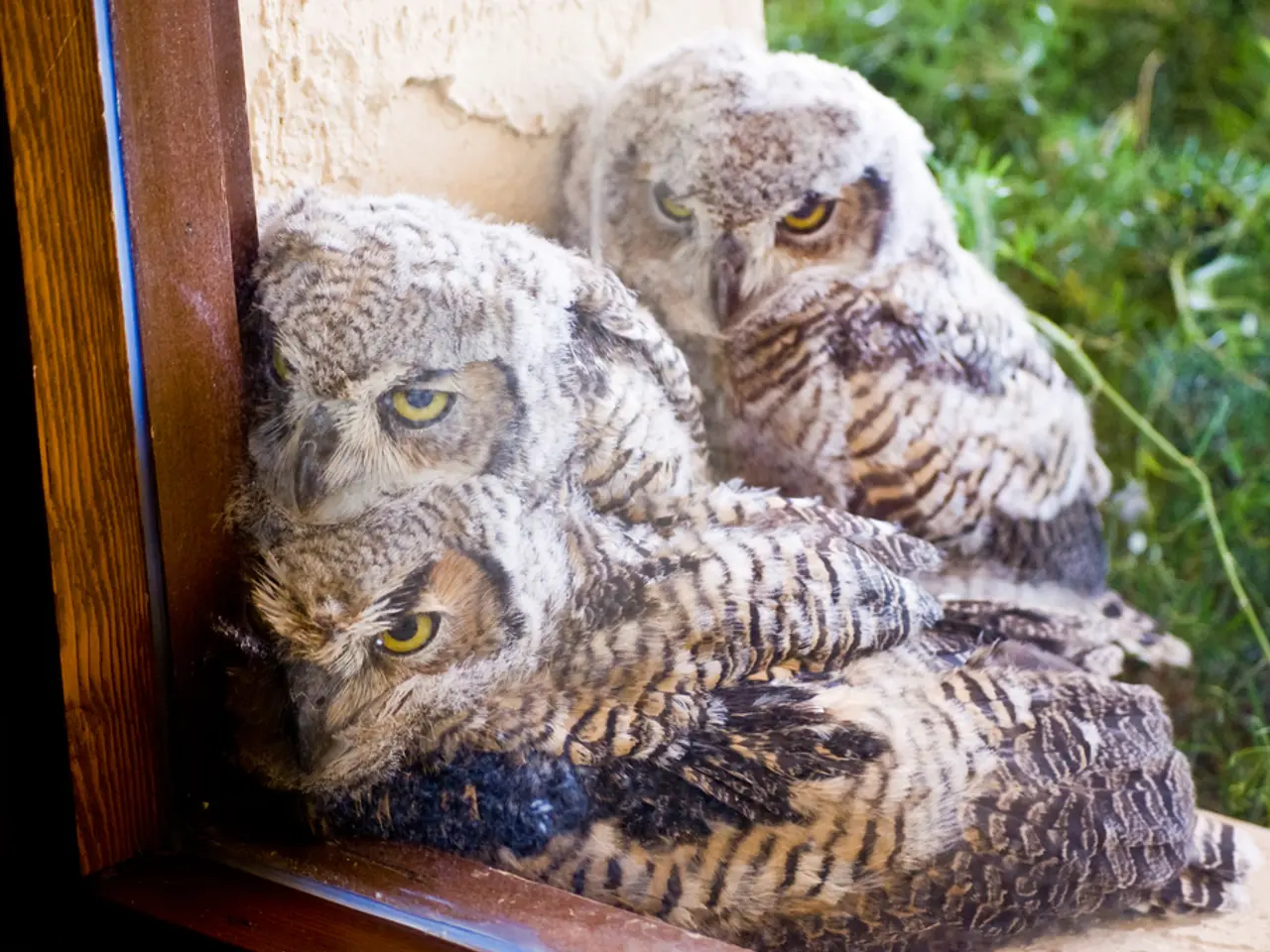Six Yoga Positions Connected with Nature, Adaptable for Various Mobility Ranges, Inspiring Awe
Exploring Nature-Inspired Yoga Poses for Beginners: A Comprehensive Guide
Embark on a journey of self-discovery and connection with nature through yoga. Here's an overview of seven nature-inspired yoga poses for beginners, each with its unique benefits, modifications, and alignment techniques.
Mountain Pose (Tadasana)
Representing grounding and stability, the Mountain Pose connects you to the earth element. It improves posture, balance, and centeredness. Align your body by standing tall with feet hip-width apart or together, engaging the thighs, lengthening the spine, and relaxing the shoulders down. Beginners can modify by using a wall for support.
Tree Pose (Vrikshasana)
Symbolizing balance and rootedness like a tree, this pose enhances concentration, stability, and leg strength. Key alignment involves rooting the standing foot firmly while placing the opposite foot on the inner thigh or calf (avoid the knee). Hands can be at the heart or overhead. Beginners can hold onto a chair or wall for support.
Eagle Pose (Garudasana)
Inspired by the eagle’s strong, focused posture, this pose strengthens shoulders and legs and improves balance. Alignment includes wrapping one arm under the other at the elbows and crossing one leg over the other while maintaining a lifted chest. Modifications involve fewer wraps or dropping the lifted leg to tap the floor for stability.
Cobra Pose (Bhujangasana)
Mimicking a cobra raising its hood, this pose opens the chest and strengthens the spine. It improves spinal flexibility and relieves lower back stiffness. Alignment stresses keeping elbows close to the body, lifting through the chest without overstraining the lower back, and pressing tops of feet into the floor.
Butterfly Pose (Baddha Konasana)
Often symbolizing the natural, open quality of a butterfly, this seated hip opener enhances flexibility in the hips and groin. Sit with the soles of the feet together, knees naturally dropping toward the floor; keep the spine straight. Use cushions under the knees or sit on a block for modification.
Child’s Pose (Balasana)
A restful, grounding pose that mimics a child curling inward, calming the mind and stretching the back. Alignment includes sitting back onto the heels, extending the arms forward or alongside the body, and relaxing the forehead to the mat. Beginners can widen knees or place a bolster beneath the torso for comfort.
For in-depth instructions, explore yoga blogs and training websites specializing in nature-inspired poses, alignment technique articles, and yoga classes or videos focusing on foundational poses and elemental themes. This combined approach will provide you with comprehensive insights into practicing these poses safely and effectively, along with understanding their deeper symbolic connections to nature and elements such as earth and water.
For instance, to breathe properly in Mountain Pose, individuals should breathe deeply through their nose, expanding their ribcage with each inhale, and focus on steady, rhythmic breathing. Traditional Child's Pose keeps knees together while folding forward over thighs, creating deeper compression through the core and providing gentle massage for internal organs. Prop assistance for Cobra Pose includes using a bolster under the chest and yoga blocks under the palms to reduce wrist pressure and maintain proper alignment.
Modifications are essential for beginners. For example, in Tree Pose, individuals can choose a fixed point at eye level to maintain their balance throughout the pose. Hip tension release occurs as Butterfly Pose targets inner thighs, groins, and hip flexors through gentle sustained stretching. Mountain Pose strengthens core muscles, improves proprioception, enhances overall stability, reduces back pain, increases body awareness, and helps correct habitual postural imbalances.
Regular practice of Butterfly Pose helps counteract prolonged sitting effects, reducing lower back pain and improving walking gait. In Mountain Pose, individuals should stand with feet hip-width apart, distributing weight evenly across both soles, and press through their feet while lengthening their spine. In Cobra Pose, individuals should start with Sphinx Pose, transition to low Cobra, and progress to full Cobra over time, never forcing the extension beyond their body's natural range.
Child's Pose offers deep relaxation and activates the parasympathetic nervous system, triggering the body's rest-and-digest response. Cobra Pose mimics a serpent's graceful rise, offering gentle back strengthening that's accessible across mobility levels. Mountain Pose serves as a fundamental yoga position, mimicking the unwavering strength of towering peaks.
Tree Pose strengthens the core muscles, improves balance, and builds functional strength that translates to better balance in daily activities. Cobra Pose strengthens the erector spinae muscles and improves thoracic spine mobility, increasing the back's resilience against daily stressors like prolonged sitting or carrying heavy loads.
Eagle Pose challenges coordination while building intense focus through intricate limb wrapping. Mountain Pose can be modified for limited mobility by performing it while seated in a sturdy chair, resting feet flat on the floor or footrest, and using a wall for back support if needed. Yoga blocks under each knee provide gentle elevation when hip flexibility is limited.
Butterfly Pose targets the hips, pelvis, and lower back, providing a gentle opening for tight areas. Seated Butterfly Pose involves sitting with soles of feet together, allowing knees to fall to the sides like butterfly wings, and folding forward from the hips. Wall support variations for Tree Pose include placing the back against a wall for stability and positioning oneself arm's length from a wall to lightly touch it with fingertips when needed.
Bolster support can be used under the knees in reclined Butterfly or beneath the forehead in seated forward fold to enhance comfort. Reclined Butterfly Pose involves lying on the back with the same leg position, letting gravity naturally open the hips. Eagle Pose demands intense mental focus and increases synovial fluid production, lubricating joints and improving range of motion over time.
Tree Pose challenges balance while building strength and focus for more advanced nature-inspired movements. In Eagle Pose, individuals should wrap their right arm under their left at the elbows, bend their elbows, and wrap their forearms around each other, bringing their palms together if possible.
Incorporate the breathwork technique of deep, steady breathing through the nose into the Mountain Pose practice to foster a deeper connection with the earth element. You might also find integrating yoga sequences inspired by the home-and-garden landscape, such as the Warrior series mimicking a strong and resilient tree or the Sun Salutation mirroring the daily growth cycles, beneficial for your health-and-wellness and fitness-and-exercise routines, contributing to an overall enriching lifestyle.
By exploring fitness-and-exercise routines inspired by various aspects of nature, you can breathe fresh life into your yoga practice, integrating elements like sunlight, trees, and even butterflies into your daily exploration of self-discovery and connection. This holistic approach integrates the blessings of nature into your home-and-garden, fostering a blissful sense of peace and harmony in your life.




